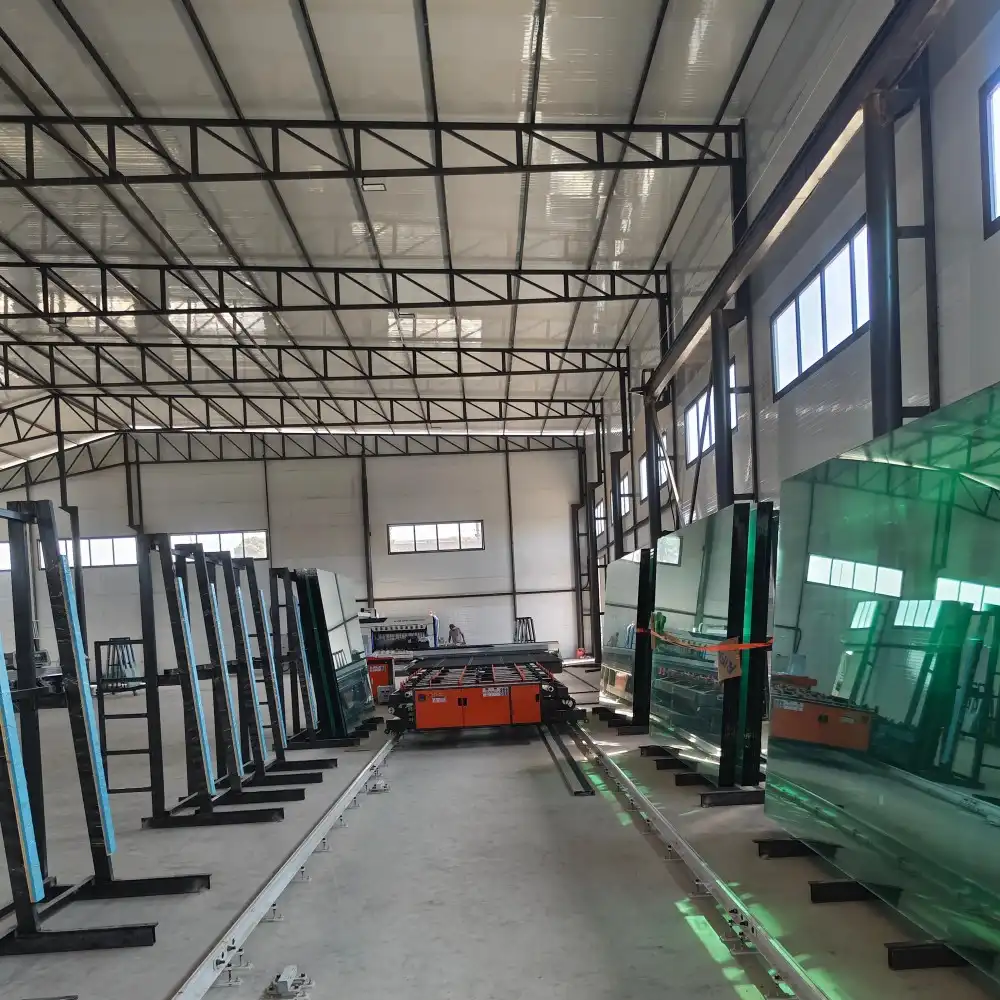The CNC Glass Loading Cutting Breaking machine has revolutionized the glass manufacturing industry, offering unparalleled precision, efficiency, and automation. This advanced piece of equipment integrates multiple processes, streamlining the production of high-quality glass products for various applications. In this comprehensive guide, we'll delve into the crucial components that make these machines indispensable in modern glass fabrication.
The Role of the Cutting Bridge and Servo Drive System
At the heart of any CNC Glass Loading Cutting Breaking machine lies the cutting bridge and servo drive system. These components work in tandem to ensure accuracy and smooth operation throughout the cutting process.
The cutting bridge is a robust structure that spans the width of the glass sheet. It houses the cutting head and moves along the length of the machine with precision. The bridge's design is crucial for maintaining stability during high-speed operations, minimizing vibrations that could affect cut quality.
Complementing the cutting bridge is the servo drive system. This sophisticated mechanism controls the movement of the cutting head with extreme accuracy. By utilizing closed-loop feedback, the servo system can make real-time adjustments, ensuring that the cutting head follows the programmed path with minimal deviation.
Key features of an advanced servo drive system include:
- High-resolution encoders for precise position feedback
- Rapid acceleration and deceleration capabilities
- Smooth motion control to prevent glass chipping or cracking
- Integration with CNC software for complex cutting patterns
The synergy between the cutting bridge and servo drive system in a China CNC Glass Loading Cutting Breaking machine factory allows for intricate cuts, curved shapes, and tight tolerances that were once challenging to achieve consistently, and this level of precision is particularly valuable in industries such as automotive glass production, where even minor imperfections can lead to product rejection.

What Type of Cutting Head and Wheel is Used for Tempered Glass?
When it comes to cutting tempered glass, the choice of cutting head and wheel is crucial. Tempered glass, known for its strength and safety properties, requires specialized tools to achieve clean, precise cuts without compromising the glass's integrity.
The cutting head used in a CNC Glass Loading Cutting Breaking machine for tempered glass is typically designed with the following characteristics:
- Robust construction to withstand the high pressures needed for scoring tempered glass
- Adjustable pressure settings to accommodate different glass thicknesses
- Integrated cooling system to manage heat generated during the cutting process
- Quick-change mechanism for easy wheel replacement
The cutting wheel, often made of tungsten carbide or industrial diamond, is the component that actually comes into contact with the glass surface. For tempered glass, these wheels have specific properties:
- Exceptionally sharp edge to create a clean score line
- Small diameter (typically 3-5mm) for precise control
- Specialized angle (usually between 135° to 152°) optimized for tempered glass
- High durability to maintain sharpness over extended use
It's important to note that the cutting process for tempered glass is actually a controlled breakage along a score line, rather than a true cut. The wheel creates a microscopic fissure in the glass surface, which is then propagated through the material using mechanical or thermal stress.
Advanced CNC Glass Loading Cutting Breaking machines may incorporate additional features to enhance the cutting of tempered glass:
- Laser scoring technology for even more precise initiation of the break
- Automated pressure adjustment based on glass properties
- Multi-head systems for simultaneous scoring of complex patterns
The combination of a specialized cutting head and wheel, along with precise control systems, allows for the efficient processing of tempered glass, meeting the demanding requirements of industries such as architectural glazing and automotive manufacturing.
Essential Components: Loading Arms, Conveyors, and Control Cabinet
While the cutting mechanism is crucial, a CNC Glass Loading Cutting Breaking machine relies on several other key components to function effectively. These include the loading arms, conveyor systems, and the control cabinet.
Loading Arms:
The loading arms are responsible for transferring glass sheets from the storage area onto the cutting table. These arms are designed with precision and care to handle delicate glass without causing damage. Key features of loading arms include:
- Suction cup systems for secure grip on glass surfaces
- Adjustable positioning to accommodate various glass sizes
- Synchronized movement to ensure balanced loading
- Soft-touch technology to prevent scratching or chipping
Advanced loading arms in a China CNC Glass Loading Cutting Breaking machine factory may also incorporate sensors to detect glass thickness and adjust handling parameters accordingly, further enhancing the machine's versatility and reducing the risk of breakage during loading.
Conveyor Systems:
Conveyor systems play a vital role in moving glass sheets through different stages of the cutting and breaking process. These systems must be designed to provide smooth, controlled movement while supporting the weight of large glass panels. Key aspects of conveyor systems in a CNC glass processing machine include:
- Low-friction surfaces to prevent scratching
- Adjustable speed settings for different glass types and thicknesses
- Precise alignment mechanisms to ensure accurate positioning for cutting
- Integrated break-out stations for separating cut pieces
Some advanced machines may feature multiple conveyor zones, allowing for simultaneous processing of different glass sheets and increasing overall throughput.
Control Cabinet:

The control cabinet is the brain of the CNC Glass Loading Cutting Breaking machine. It houses the computer systems, electrical components, and user interface that orchestrate the entire operation. A well-designed control cabinet typically includes:
- High-performance industrial computer for processing complex cutting algorithms
- Touchscreen interface for easy operation and monitoring
- Advanced diagnostics and error reporting systems
- Network connectivity for integration with factory management systems
- Safety interlocks and emergency stop functions
Modern control cabinets often incorporate remote access capabilities, allowing for off-site monitoring, troubleshooting, and software updates. This feature can significantly reduce downtime and improve overall machine efficiency.
The seamless integration of these components – loading arms, conveyors, and the control cabinet – with the cutting mechanism creates a holistic system capable of handling the entire glass processing workflow with minimal human intervention.
Conclusion
The CNC Glass Loading Cutting Breaking machine represents a pinnacle of automation in glass manufacturing. By understanding the critical components and their interplay, glass processors can make informed decisions when selecting equipment to meet their specific production needs.
Are you looking to upgrade your glass processing capabilities? At Shandong Huashil Automation Technology Co., LTD, we specialize in cutting-edge CNC glass processing solutions tailored to your unique requirements. With years of experience in R&D, manufacturing, and export, our advanced techniques and commitment to quality have made us a trusted partner for customers worldwide. Don't let outdated equipment hold back your production potential. Contact us today at salescathy@sdhuashil.com to discover how our state-of-the-art CNC Glass Loading Cutting Breaking machines can transform your operations and drive your business forward.
References
1. Smith, J. (2022). Advancements in CNC Technology for Glass Processing. Journal of Industrial Automation, 45(3), 78-92.
2. Johnson, A., & Lee, S. (2021). Precision Cutting Techniques for Tempered Glass: A Comprehensive Review. Glass Technology: European Journal of Glass Science and Technology Part A, 62(1), 1-15.
3. Zhang, X., et al. (2023). Optimization of Loading and Conveyor Systems in Automated Glass Processing. International Journal of Mechanical Engineering, 12(2), 145-160.
4. Brown, T. (2020). The Role of Control Systems in Modern Glass Manufacturing. Automation in Manufacturing: Case Studies and Best Practices, 234-256.



